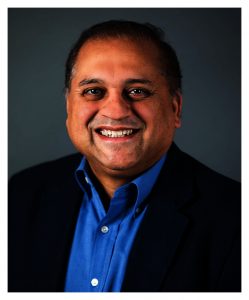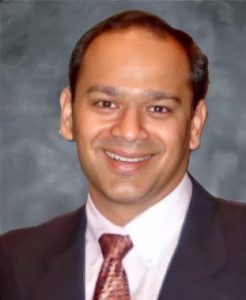Financial Education: Planning for Kids’ Education Funding
By Ash Malhotra and Salil Patil
 Education costs (Tuition Plus Boarding) in the US have been growing consistently at the rate of 6-7% for the past 25 years. That means that education costs are doubling every 9-10 years…(Remember the Rule of 72). Parents need to be aware of this and plan for an education fund at the earliest to let the power of compounding help them put their kids through college.
Education costs (Tuition Plus Boarding) in the US have been growing consistently at the rate of 6-7% for the past 25 years. That means that education costs are doubling every 9-10 years…(Remember the Rule of 72). Parents need to be aware of this and plan for an education fund at the earliest to let the power of compounding help them put their kids through college.
Let is first understand the concept of Financial Aid or Scholarships. Financial Aid is of two types namely:
Merit based aid: This aid is strictly based on Student Achievements such as
- Exceptional Scores is SAT/ACT/AP exams
- Awards and placements in contests
- Scholarship or Talent search recipients
 Merit based aid for State Universities is even more competitive and limited to between $2500 to $5000 per year. Less than 20% students are eligible for this aid and only 0.3% qualify for a full “ride”. Students stand a better chance of getting Merit based aid from Private universities and this helps to offset some of the cost difference between a State and Private University
Merit based aid for State Universities is even more competitive and limited to between $2500 to $5000 per year. Less than 20% students are eligible for this aid and only 0.3% qualify for a full “ride”. Students stand a better chance of getting Merit based aid from Private universities and this helps to offset some of the cost difference between a State and Private University
Need Based Aid: This aid is based on the Family’s income and assets which are supposed to be filled out on the FAFSA (Free application Federal Student Aid) or the CSS (College Scholarship Services) profile. Family income and assets (parent and children) are filled out on the FAFSA (State Universities) and CSS Profile (Private Universities) and an Expected family contribution (EFC) is calculated on the basis of that. The difference between the Cost of Attendance (COA) and the EFC determines the need-based aid that a student is eligible for.
Need based Aid comes in the form of:
- Grants- Free money and hence most desirable
- Work Study
- Subsidized Loan @ 6% annual interest wherein, the interest DOES NOT accrue until 6 months after Graduation
- Unsubsidized Loan @ 6% annual interest wherein, the interest starts accruing from Day 1
Parents should aim to reduce their EFC to a minimum by allocating assets to the Excludable Buckets like Retirement accounts, Qualified Annuities and IGIP based investments.
It was reported in 2018 that around $2.6B of federal aid went unclaimed because parents “thought” they were making too much money to qualify for it. “Too much to qualify” is a relative concept when you compare tuition costs from Texas to say NY or CA. Regardless of the income, FAFSA or CSS applications should be done for every year that the kid goes to college. Parents should sit down with their kids to lay down the expectations of how their education will be funded and be a part of the college selection process to support the means to pay for it.
In the next section we shall talk about the COA and the EFC components and ways to reduce EFC and better our chances of getting need based aid.
To conclude, my team and I are here to educate you on topics pertaining to personal finance, show you how to avail of some of these financial vehicles, and help you position yourselves with these vehicles. We are FEFAF – Families Educating Families About Financial success. Let our fantastic team of Financial Mentors expand your vision! Send in your questions or comments to me at amfinins@gmail.com or text me at 832.723.9555. Let’s talk and discuss your financial goals and fill in the gaps in your financial education and planning.
ASH MALHOTRA
 A long-time resident of Houston, Ash is also a proud UofH Alumni with a background in Computer Science. This expertise developed into an IT Security & Managed Services Business which he has successfully run for the last 13 years. Ash is a constant learner and teacher, expanding his business expertise into Real Estate and lately into the remarkable area of Financial Education. This – Educating families about Finance and the correct vehicles for growth, protection, and Tax Benefit strategies – is his absolute passion.
A long-time resident of Houston, Ash is also a proud UofH Alumni with a background in Computer Science. This expertise developed into an IT Security & Managed Services Business which he has successfully run for the last 13 years. Ash is a constant learner and teacher, expanding his business expertise into Real Estate and lately into the remarkable area of Financial Education. This – Educating families about Finance and the correct vehicles for growth, protection, and Tax Benefit strategies – is his absolute passion.
SALIL PATIL
 Salil is an Electrical Engineer by profession getting his MS & MBA from Lamar University. He currently works in Oil & Gas as a Senior Instrumentation Manager. Given his technical skills and phenomenal number crunching abilities, he dove headfirst into the area of Financial Education when the opportunity presented itself and has now made it his Plan B in life. He is the passionate team lead of the FEFAF group.
Salil is an Electrical Engineer by profession getting his MS & MBA from Lamar University. He currently works in Oil & Gas as a Senior Instrumentation Manager. Given his technical skills and phenomenal number crunching abilities, he dove headfirst into the area of Financial Education when the opportunity presented itself and has now made it his Plan B in life. He is the passionate team lead of the FEFAF group.
